Cale Gundy Era Began at Oklahoma 32 Years Ago With a Bang ... and the 'Cale Mary'
The Cale Gundy era at Oklahoma spanned 32 years, 27 college football seasons, 353 games and countless blue-chip recruits.
It began with one of the Sooners’ most heralded homegrown recruits ever: Gundy himself.
Gundy — the OU receivers coach who resigned unexpectedly late Sunday night following an apparently racially charged incident during a team meeting last week — was the most coveted high school player in the state of Oklahoma when he signed with the Sooners in 1990 out of Midwest City High School, and was a top-five national quarterback recruit.
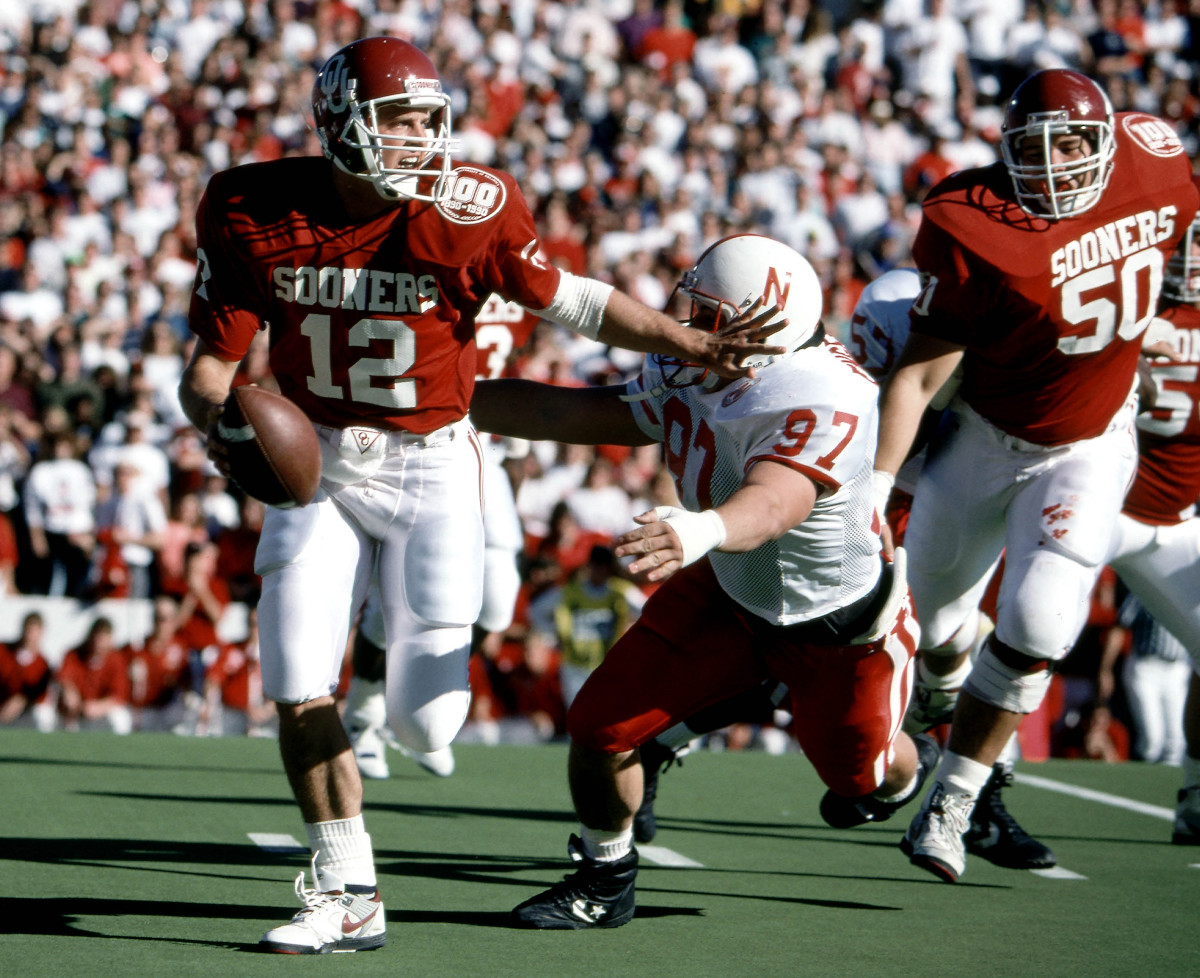
A two-sport star who also played baseball for the Sooners, Gundy’s coming out party in Norman unfolded in dramatic fashion midway through his true freshman year.
With the program reeling from NCAA probation in the wake of Barry Switzer’s resignation following the 1988 season, Gundy could have followed his big brother Mike to Oklahoma State.
But Mike, who set numerous Big Eight Conference records as a Cowboy, had previously (and strongly) considered being a Sooner. A quick drive down Sooner Road and Cale happily donned the Crimson and Cream when Gary Gibbs offered him a scholarship.
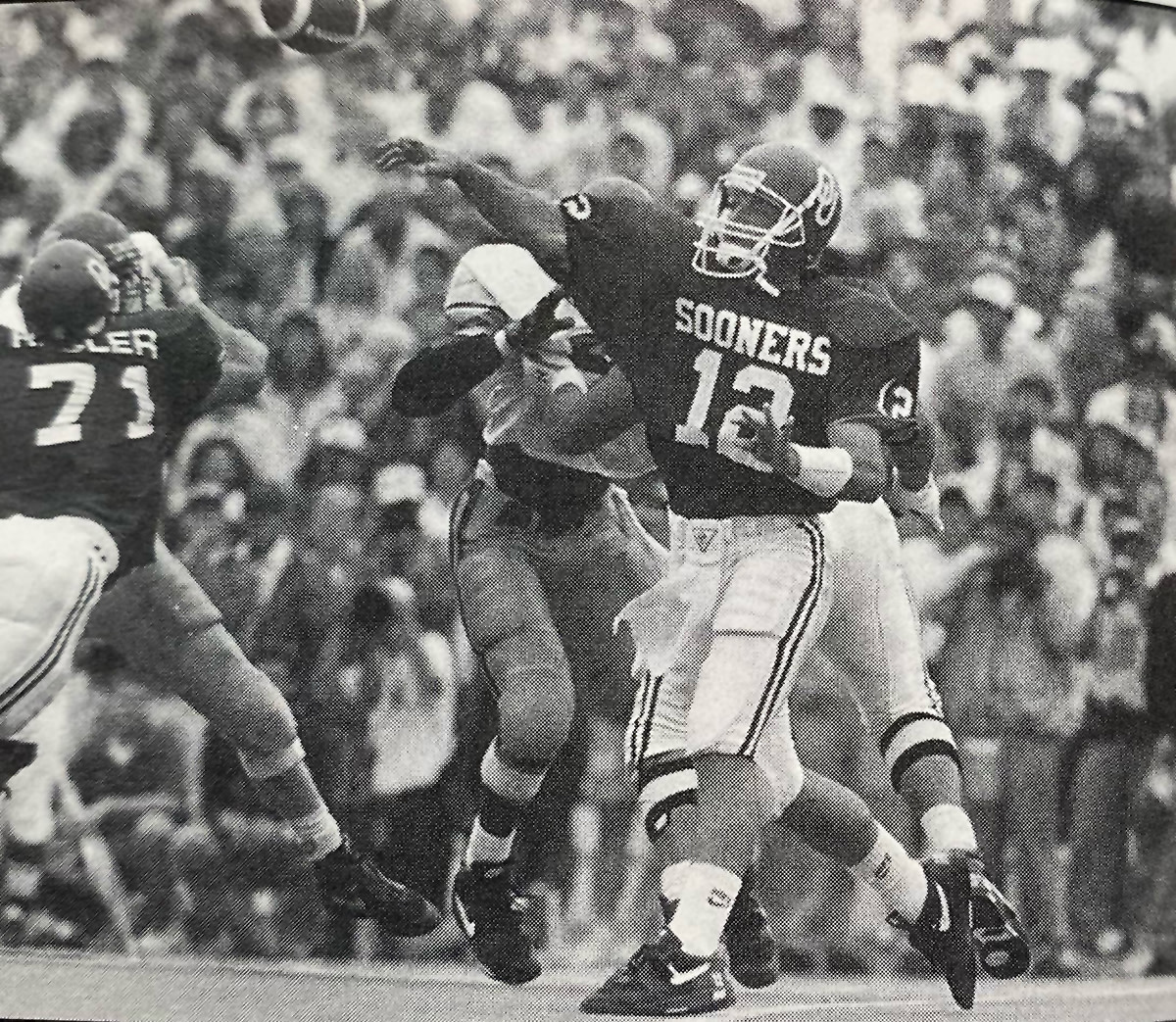
The 6-foot, 193-pound Gundy wasn’t entirely ready for college football when his career began, but it didn’t take him long.
After serving as sophomore Steve Collins’ backup in easy non-conference victories over UCLA, Pitt and Tulsa (he completed 7-of-18 passes for 66 yards with no touchdowns and two interceptions), Gundy sat the bench against Kansas — the only game in his career in which he was healthy and didn’t play.
The following week — with big brother Mike watching from the sideline as an OSU coach — the legend of Cale Gundy was born.
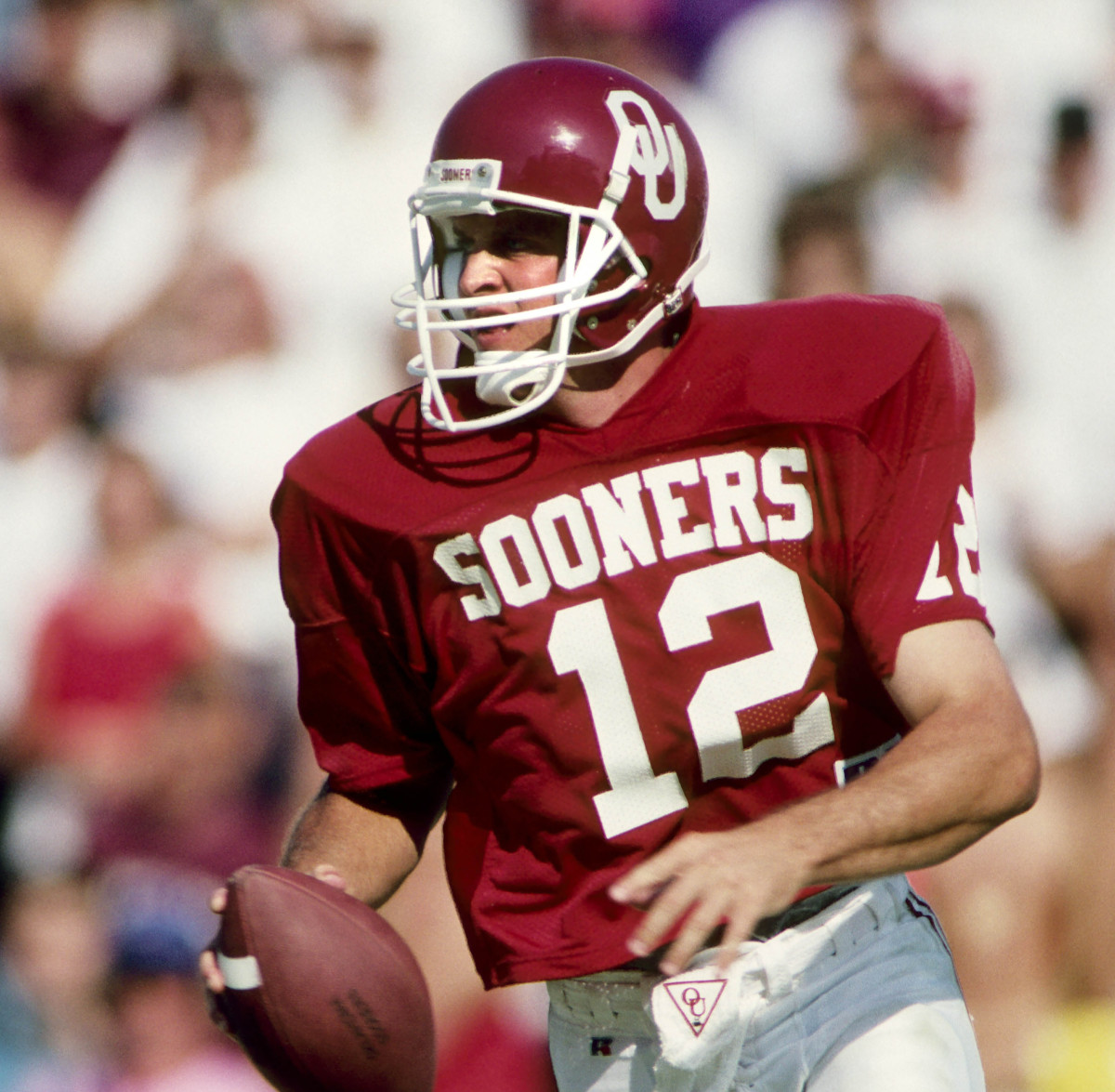
With the Cowboys leading 14-7 as halftime approached, Gundy was brought off the bench to run the Sooners’ two-minute offense.
On fourth-and-6, Gundy threw a bomb to tight end Adrian Cooper, who made a leaping catch and powered over the goal line as the clock expired.
Sooner Magic? No, just the “Cale Mary.”
Gundy went 6-of-10 for 119 yards and logged his first career TD in what became a 31-17 Bedlam blowout.
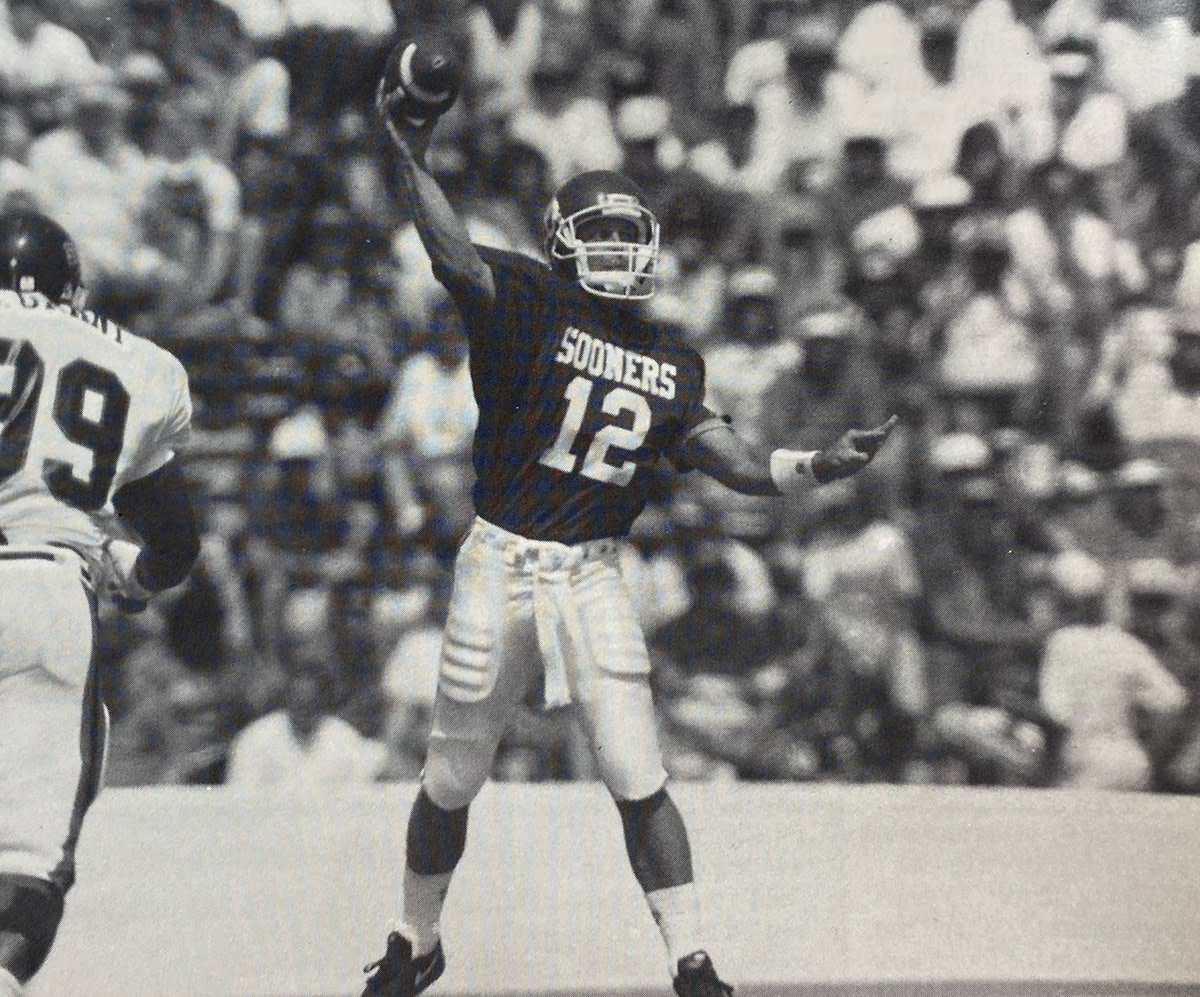
Gundy backed up Collins again the next week against Texas. But when Gundy came off the bench in the second quarter against the Longhorns, he never relinquished the job.
Gundy finished the Red River Rivalry completing just 3-of-6 passes for 51 yards and engineered a 51-yard drive in the final two minutes that set up a game-winning field goal try. But R.D. Lashar’s 46-yard field goal went wide left and Texas held on to a 14-13 win.
Gundy got his first career start in the Sooners’ next game against Iowa State, but again he didn’t have the luck.
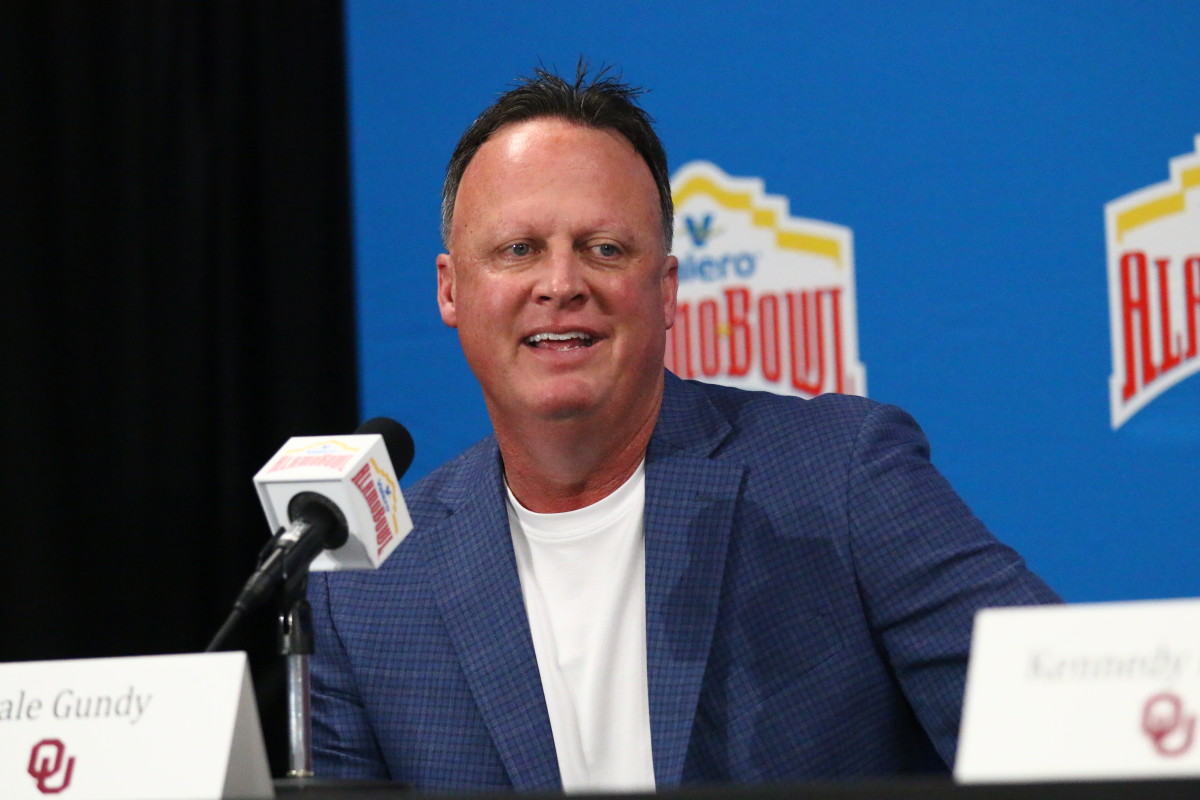
Gundy was 10-of-13 for 119 yards but the Sooners suffered their first loss to the Cyclones since 1960, falling 33-31 in a bizarre defeat in Norman.
Gundy hit 8-of-14 passes for 169 yards with one passing touchdown and one rushing touchdown and had a 14-12 lead at Colorado — the 1990 eventual national champion — when he left the game due to injury. The Buffs won 32-23.
With Gundy back in the lineup, the Sooners won their last three games (55-10 at Missouri, 34-7 against Kansas State, 45-10 in an historic upset over Nebraska) and he was solid: 20-of-42, 387 yards, two TDs, no INTs combined.
Gundy’s overall numbers in 1990 were modest — 54-of-109, 904 yards, four TDs, three interceptions — but he was the quarterback tasked with finally moving OU away from the wishbone era and into a more modern offense.
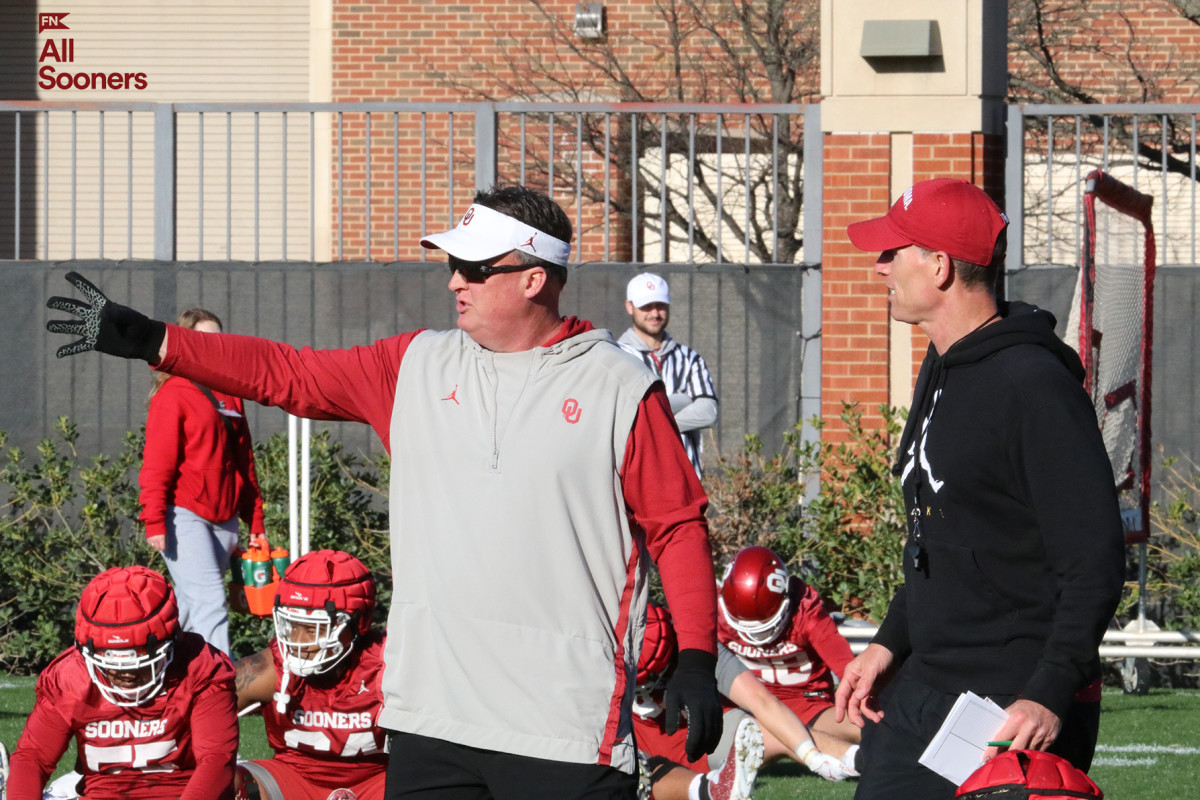
Gibbs’ offensive two-deep had been largely built for running the option, and with NCAA probation stripping the roster of vital depth, the rebuild was mountainous. OU went 7-4 the year before Gundy arrived, then finished 8-3, 9-3, 5-4-2 and 9-3 in his four seasons.
Gundy’s record as the starter was 24-12-2, and he outpaced every OU quarterback who came before him in single-game passing, single-season passing and career passing. He finished his career with 6,142 passing yards — a number that stood firm atop the OU record books until Gundy returned as Bob Stoops’ running backs coach in 1999 and helped Josh Heupel wipe out every one of his old records.
When Gundy graduated, he held the three most prolific passing seasons in OU history. Now, his sophomore, junior and senior year stats rank 20th, 22nd and 26th in school history, lapped by the likes of Sam Bradford, Landry Jones, Baker Mayfield, Kyler Murray, Jalen Hurts, Jason White, Spencer Rattler, Paul Thompson, Nate Hybl and, of course, Heupel.
But no matter how many “passing” quarterbacks redecorate the Sooner record books, Gundy will always be the first.
